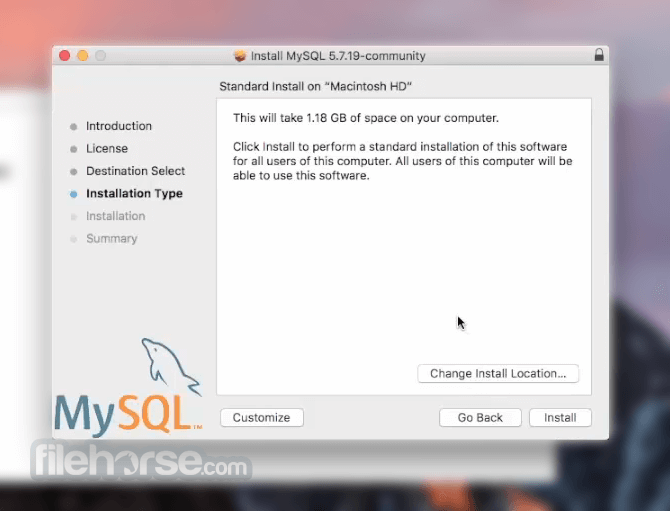

- #GET STARTED WITH USING MYSQL ON MAC HOW TO#
- #GET STARTED WITH USING MYSQL ON MAC MAC OS#
- #GET STARTED WITH USING MYSQL ON MAC PASSWORD#
- #GET STARTED WITH USING MYSQL ON MAC OFFLINE#
The default set up installs many additional packages like MySQL workbench, Connectors, plugins, documentation, samples databases and so on. Select whichever you like and hit the Download button.Īfter the download finishes double-click to start the installer.
#GET STARTED WITH USING MYSQL ON MAC OFFLINE#
The first one is a web installer and the second one is an offline installer. Scroll down a little and you will be displayed download links like this: To download MySQL for Windows navigate to.
#GET STARTED WITH USING MYSQL ON MAC HOW TO#
This post specifically covers how to install MySQL on Windows, Linux and Mac OS. MySQL is one of the most used Relational databases on the Web and in this lesson, we will learn how to install it. Installing MySQL (Windows, Linux and Mac)

You can then connect to the database server using a command like the one below. Restart the database server using the graphical manager ( Windows and macOS or by executing the following command at the server console (Linux): $ sudo installdir/ctlscript.sh restart mysql
#GET STARTED WITH USING MYSQL ON MAC PASSWORD#
When prompted for a password, enter the password you entered during the installation process. Use the following command, remembering to replace PASSWORD with the application password from the first step: $ installdir/mysql/bin/mysql -u root -p -e "grant all privileges on *.* to identified by 'PASSWORD' with grant option"

For example, if you are using ufw, you would run the following commands (on Linux only): $ sudo ufw allow mysql/tcpĮdit the MySQL configuration file and find the line containing: bind-address=127.0.0.1Ĭomment out this line by placing a hash (#) symbol at the beginning, so that it looks like this: #bind-address=127.0.0.1Īt the server console, allow remote access to the database server using the command line client.
#GET STARTED WITH USING MYSQL ON MAC MAC OS#
To connect to your database server remotely using the MySQL client, follow these steps: Windows, Mac OS X, Linux You are strongly advised to close the WAMP ports (refer to the FAQ for more information on this). IMPORTANT: Bitnami Native Installers do not modify the firewall configuration of your computer, therefore the WAMP ports could be open which is a significant security risk. If present, the installer uses MariaDB and if not, it uses MySQL.ĭepending on which database server (MySQL or MariaDB) is used by the installation, use the appropriate guides in our documentation for database-related operations.

Windows native installer users can identify which database server is used in the stack by checking for the presence of the installdir/mariadb directory. Linux and macOS native installer users can identify which database server is used in the stack by running the command below: $ test -d installdir/mariadb & echo "MariaDB" || echo "MySQL" On account of these changes, the file paths and commands stated in this guide may change depending on whether your Bitnami stack uses MySQL or MariaDB. NOTE: We are in the process of modifying the configuration for many Bitnami stacks. Connect to MySQL from a different machine


 0 kommentar(er)
0 kommentar(er)
